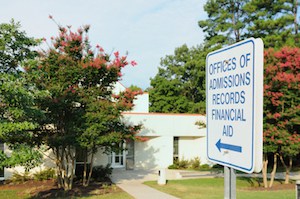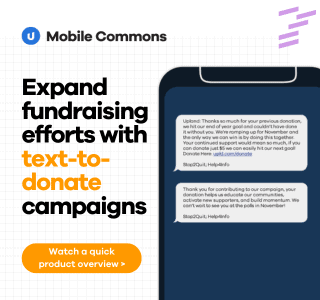According to a new article by The New York Times, a light nudge can make a big impact in the lives of students. The article points to multiple studies that suggest that text messaging can help students perform better in school, encourage parents to spend more time with their children in order to improve literacy rates, and coach students through college admissions.
What is a behavioral nudge?
 For years researchers have been searching for small yet effective improvements to current educational models. Loosely defined as “behavioral nudges,” the idea is that educational systems don’t need major overhauls that exhaust budgets in order to make a change. Rather, there are small-scale and cost-effective solutions that can make a difference – solutions like text messaging.
For years researchers have been searching for small yet effective improvements to current educational models. Loosely defined as “behavioral nudges,” the idea is that educational systems don’t need major overhauls that exhaust budgets in order to make a change. Rather, there are small-scale and cost-effective solutions that can make a difference – solutions like text messaging.
Two recent studies showed positive results on the use of text messaging for improved educational outcomes. The first examined whether personalized text messages, when used in conjunction with peer mentor outreach, increased the number of low-income high school graduates who went to college. The study found that 70% of students who received the texts were likely to enroll in college, compared to 63% for those who did not receive the messages. “Seven percentage points is a big increase in this field,” notes the article.
A second study was designed to help keep community college students from dropping out after their freshman year. Students in the test group were sent text message reminders for re-enrollment form completion. The results? 68% of those who received the text messages went on to complete their sophomore year – a whopping 14% more than those who did not receive the messages.
Why text messages are effective behavioral nudges
 By breaking down a complex process like college enrollment into actionable steps, text messaging makes daunting tasks more manageable. It also offers the type of immediate and consistent support that students need to follow through on their decisions. Text messaging studies, such as the two mentioned above, support the value of using text messaging as a means of improving educational outcomes.
By breaking down a complex process like college enrollment into actionable steps, text messaging makes daunting tasks more manageable. It also offers the type of immediate and consistent support that students need to follow through on their decisions. Text messaging studies, such as the two mentioned above, support the value of using text messaging as a means of improving educational outcomes.
As The New York Times points out, while “text messaging won’t help everyone get through college,” it offers several cost-effective solutions for a variety of challenges in higher education. Bowling Green State University, for instance, uses text messaging in virtually all of their campus offices, from financial aid to housing to student life, to engage with their students. Other schools are also using text messaging to help students locate resources, such as informing them of library book renewals and helping them locate a peer tutor.
Text messaging has been the de-facto communication choice for teens for years now. It only makes sense that educational institutions are starting to tap into its power as a powerful communication tool to keep their students enrolled and achieving. If you’d like to learn more about how to use text messaging in education, please email us.


